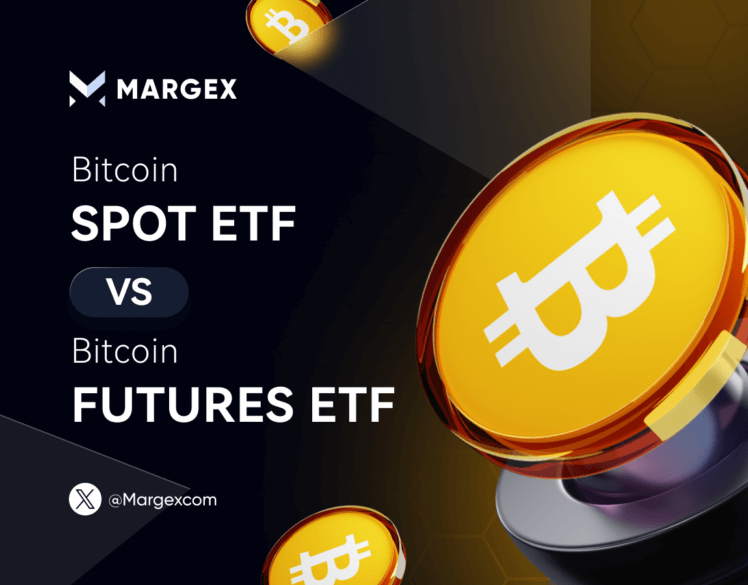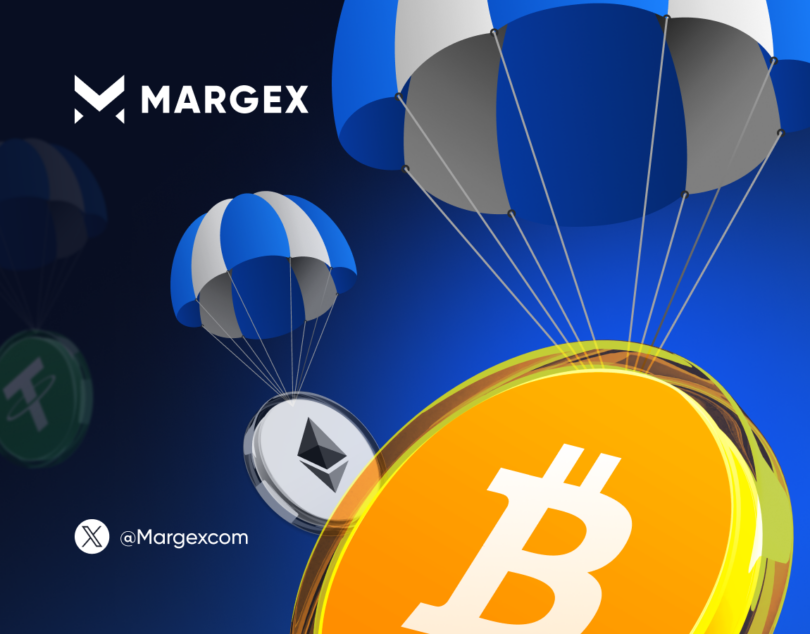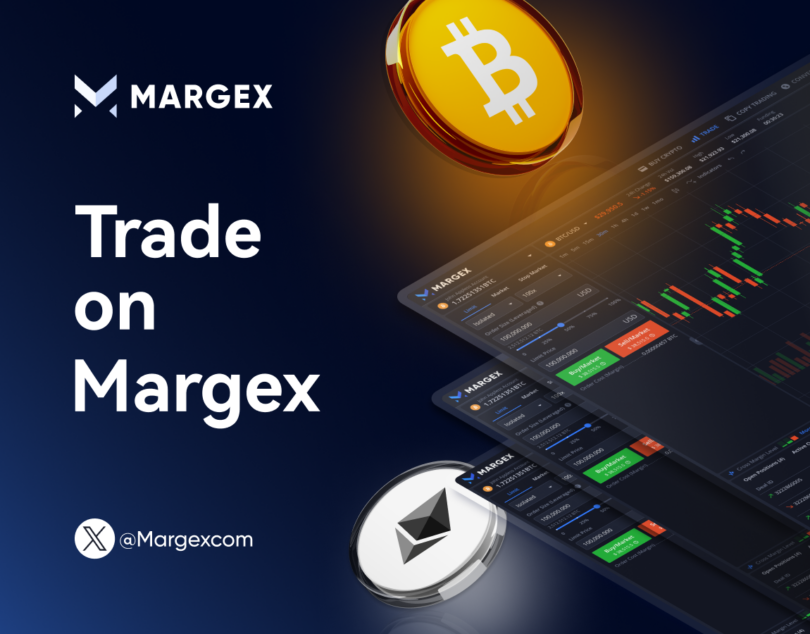Bitcoin Spot vs. Futures ETF: What’s the Difference?

Since 2009 when Bitcoin launched cryptocurrency has experienced tremendous evolution. Bitcoin currently exists as both an electronic currency and an investment instrument that institutional investors can access through multiple financial instruments. Exchange-traded funds (ETFs) for Bitcoin stand as the most favored investment options because they enable investors to access Bitcoin markets through indirect holdings. Different Bitcoin Exchange-Traded Funds have various distinctions between them. Bitcoin Spot ETFs and Bitcoin Futures ETFs stand as the essential two variations among Bitcoin Exchange-Traded Funds.
Here we discuss the major distinctions between Bitcoin Exchange-Traded Funds and Bitcoin Futures Funds together with their advantages against their drawbacks as supported by the current market statistics. This guide serves as a comprehensive guide for both experienced investors and newbies seeking to determine their best investment options
Understanding Exchange-Traded Funds (ETFs)
The Exchange-Traded Fund (ETF) represents a pooled investment fund that operates as a financial asset accessible for trading on stock exchanges. Shareholders associated with ETFs can acquire them through the stock market in a fashion comparable to stock purchasing. Exchange-traded funds contain varied assets like stocks or bonds giving investors access to diverse market segments or sectors through single ETF shares instead of individual security purchases.
The Vanguard Total Stock Market Index Fund (VTI) functions as an ETF that provides investors with tracking the U.S. stock market performance. ETF owners with market expansion predictions have the option to acquire shares in this ETF instead of trading with individual stocks. The trading method leads to lower investment costs while distributing investments across various assets which decreases potential losses.
What Are Bitcoin ETFs?
An introduction to Bitcoin ETFs begins with clarifying their meaning followed by an explanation of spot and futures ETF distinctions. ETFs serve as investment funds that function the same way as stocks do regarding their exchange listing. This investment product monitors the market value of Bitcoin as its core asset. ETFs are highly favored by investors due to their combination of portfolio diversity with high market flexibility and fast trading transactions.
A Bitcoin ETF provides investors access to Bitcoin price fluctuations by holding Bitcoin on their behalf and managing its safe storage. Investors purchase shares of the ETF that subsequently holds Bitcoin assets or their derivatives in trust for its shareholders.
Bitcoin Spot ETFs: The Direct Approach
A Bitcoin Spot Exchange-Traded Fund follows the present value of Bitcoin in the market known as the spot price. The fund maintains actual Bitcoin allocations for reserve purposes. A spot ETF investment results in the fund making Bitcoin acquisitions and securely warehousing the purchased Bitcoin cryptocurrency. An ETF’s share worth expands or decreases precisely at Bitcoin’s market rate fluctuations.
Key Features of Bitcoin Spot ETFs
Direct Exposure: Professional investors can obtain Bitcoin price exposure through spot ETFs since these funds maintain Bitcoin in their reserves.
cryptocurrency.
Transparency: Investors can understand Bitcoin ETF values through simple market price transparency because the fund values directly mirror Bitcoin market changes.
Lower Costs: ETFs based on bitcoin spot do not need complex futures contracts so management expenses could drop in the future.
Bitcoin Spot ETFs Cons
What is spot bitcoin ETF? As of January 2024, the SEC has approved several Bitcoin Spot ETFs, allowing direct investment in Bitcoin through regulated funds. Canadian and some European authorities have already authorized the establishment of spot Bitcoin ETFs.
Actual Bitcoin storage comes with risks since attackers specifically go after secure storage solutions that hold the assets.
Bitcoin Futures ETFs: The Indirect Approach
The Bitcoin Futures ETF does not contain Bitcoin assets within its structure. The fund engages in trading futures contracts for Bitcoin instead of buying actual bitcoins. Futures contracts serve as agreements which determine both price and date for the acquisition or sale of assets (Bitcoin) in future transactions. ETFs track Bitcoin prices indirectly through their trading activities that focus on futures contracts.
Key Features of Bitcoin Futures ETFs
Regulatory Approval: Bitcoin futures ETFs have been available since October 2021, giving them a longer track record compared to newly approved spot ETFs. The Securities and Exchange Commission approves futures-based ETFs because they operate through regulated commodities exchanges like the Chicago Mercantile Exchange (CME).
No Direct Ownership: Investors who buy into Bitcoin through these products do not handle the complicated matter of Bitcoin storage or security.
Liquidity: The strong liquidity within futures markets provides ETFs with efficient opportunities to initiate and conclude their financial positions.
Challenges with Bitcoin Futures ETFs
Tracking Error: The use of futures contracts in ETFs results in imperfect Bitcoin price tracking known as “contango” or “backwardation” which produces tracking errors between the spot price and the fund value.
Higher Costs: Reinstating futures contracts by closing old positions followed by opening fresh ones causes additional expenses that gradually reduce earnings potential.
Complexity: Learning how futures contracts function proves difficult for students starting in the market.
Recent Developments in Bitcoin ETFs
Bitcoin Exchange-Traded Funds experienced considerable transformation throughout the previous years. January 2024 brought Spot Bitcoin ETFs to the market thus enabling investors to access Bitcoin price fluctuations directly. The new product development created more competition for asset managers which generated lower fees that benefited traditional financial portfolios by accepting cryptocurrency investments.
Major institutional investors such as BlackRock have steered the development of this sector forward. BlackRock’s fee reduction of 0.12% at $5 billion AUM created an industrial benchmark that drove competitors to review their management costs to stay competitive.
Institutional investors have adjusted their investment approaches because of the approval and subsequent success of Spot Bitcoin Exchange-Traded Funds. These Exchange-Traded Funds (ETFs) entered portfolios held by hedge funds which utilize their position to leverage market discrepancies between spot and futures prices for arbitrage purposes. The rising popularity of cryptocurrency assets proves that institutional investors increasingly adopt them as part of their established financial plans.
Bitcoin Spot ETF vs Futures ETFs
| Feature | Bitcoin Spot ETF | Bitcoin Futures ETF |
| Underlying Asset | Holds actual Bitcoin | Holds Bitcoin futures contracts |
| Exposure | Direct exposure to Bitcoin’s spot price | Indirect exposure via futures contracts |
| Regulatory Status | Not yet approved in the U.S. (as of 2023) | Approved in the U.S. |
| Costs | Potentially lower management fees | Higher due to futures contract rollovers |
| Tracking Accuracy | Tracks Bitcoin’s price more closely | May have tracking errors |
| Custody Risks | Requires secure storage of Bitcoin | No direct custody of Bitcoin |
1. Price Tracking and Performance
Funds that track Bitcoin spot prices enable investors to monitor the actual Bitcoin performance closely as the investment returns align with cryptocurrency value changes.
Performance of Futures Bitcoin ETFs differ from Bitcoin spot price due to contango effects together with backwardation phenomena and expenses needed to renew futures contracts.
2. Costs and Fees
The expenses between these ETF types differ in their fee structures although both types have fees. Managing futures contracts results in increased costs that futures ETFs must bear.
The process of exchanging expiring futures contracts in Futures ETFs results in additional rolling costs which can create a time-related decrease in performance during contango markets.
3. Tax Implications
Investors who select Spot Bitcoin ETFs benefit from traditional tax treatment because their capital gains receive tax advantages resembling traditional securities taxation.
Gains earned from Futures Bitcoin ETFs often experience taxation as 60% long-term and 40% short-term capital gains which generate varying tax obligations.
4. Investment Horizon Suitability
Long-term Bitcoin investors will find Spot Bitcoin ETFs beneficial since these products let users access Bitcoin price movements directly. Crypto investors who use futures Bitcoin ETFs should consider short-term investment periods because futures contracts add complexity along with trading costs.
Performance Comparison: Spot vs. Futures ETFs
Bitcoin futures ETFs entered the market during 2023 when they gained nearly two years to create a trackable record. Here’s what the data shows:
Tracking Accuracy: The price accuracy of Bitcoin tracking can be better when investors use available Spot ETFs. Running Futures ETFs produces tracking errors because of routine contracting costs required for maintaining the products.
Returns: In the extended timeframe spot ETFs demonstrate the higher ability to mimic actual Bitcoin market outcomes. Futures ETFs typically experience a loss of returns because investors must pay costs to roll their contracts forward.
Volatility: Bitcoin’s high volatility affects all ETFs despite using either spot prices or futures contracts. The nature of derivatives trading leads futures ETFs to face additional volatility when operating in the market.
Regulatory Landscape: What’s Holding Back Spot ETFs in the US?
The Securities and Exchange Commission (SEC) avoids approving Bitcoin spot ETFs because it finds market manipulation and unregulated Bitcoin markets to be significant risks. The SEC has stated multiple times cryptocurrency markets present insufficient regulatory oversight combined with insufficient market transparency which makes it complicated for the SEC to protect investors.
The SEC accepts the regulated trading environment of Bitcoin futures ETFs because they are listed on exchanges such as CME. A positive change can be observed in the current situation. BlackRock and Fidelity along with other major financial institutions submitted Bitcoin spot ETF applications to regulators in 2023 because institutions were showing increased Bitcoin investment interest.
Which Should You Choose?
Your investment selection between Bitcoin spot ETFs and futures ETFs depends on whether you have specific investment goals together with a comfort level with risk and product availability.
Choose a Bitcoin Spot ETF If:
- Investors who seek precise Bitcoin cost performance should opt for direct exposure through Bitcoin’s price.
- You accept the regulatory complications along with the waiting times that the U.S. regulatory system imposes (for U.S. investors).
- The combination of reduced expenses and precise price monitoring matters more to you than immediate implementation.
Choose a Bitcoin Futures ETF If:
- The U.S. market provides you with instant Bitcoin investment opportunities.
- The indirect access to Bitcoin combined with its expenses satisfies your investment requirements.
- You prefer investing in a security that has obtained both regulation and official approval from the SEC.
Key Advantages for Investors
Spot Bitcoin ETFs function as introductory investment tools for those who aim to trade in Bitcoin without facing the challenges of direct involvement. Investors who choose spot Bitcoin ETFs avoid the financial responsibility of wallet management as well as asset protection through these funds since the fund takes care of these duties.
These ETFs enable investors to get direct access to Bitcoin’s price appreciation because they track its movement. The minimal pricing mismatch risk occurs because spot price funds hold Bitcoin while directly tracking its market value. Spot Bitcoin ETFs gain an advantage because they enable traditional stock exchange trading which allows standard investors to comfortably integrate them into their financial portfolio structures.
Bitcoin futures exchange traded Funds provide investors with regulatory advantages alongside improved risk management mechanisms. The Commodity Futures Trading Commission oversees these contracts which provide a regulatory framework that boosts investor protection. Futures-based Bitcoin ETFs avoid keeping actual cryptocurrency and this reduces potential risks from hacking or theft during operation.
The main advantage of futures trading involves earning profits during price declines because investors can implement the short strategy on Bitcoin futures contracts. Stock exchange trading of futures ETFs provides investors with efficient and liquid access to these investment funds.
Bitcoin ETFs Face Key Challenges
The main challenges associated with Bitcoin exchange-traded funds (ETFs) burden investors who consider purchasing them.
Follow-up errors persist as Bitcoin futures ETFs implement derivation methods through financial derivatives that cause their performance to differ from Bitcoin’s actual market value.
Another challenge is inefficiency. Fund managers of these ETFs need to conduct futures contract roll operations when expiration periods end to continue Bitcoin exposure. The process requires moving funds at prices which may be unfavorable therefore generating extra transaction costs during the process.
These ETFs do not allow investors to directly own Bitcoin cryptocurrency assets. The fund equipment chooses to work with future contract positions instead of possessing actual bitcoins for earnings purposes. The direct purchase of Bitcoin ETFs is only possible through a spot trading instead of using futures contracts or derivative investments.
The assets in Bitcoin futures ETFs remain under the control of fund providers who exclude self-custody from the investment options. Self-custody advocates can hold concerns about Bitcoin futures ETFs due to the lack of control over their assets since fund providers maintain complete management of holdings.
Considerations for Investors
When deciding between Spot and Futures Bitcoin ETFs, investors should consider the following factors:
- Investment Objectives
- Long-Term Exposure: Investors seeking long-term exposure to Bitcoin’s price movements may find Spot Bitcoin ETFs more suitable due to their direct correlation with the cryptocurrency’s spot price.
- Short-Term Strategies: Those employing short-term trading strategies or aiming to hedge positions might consider Futures Bitcoin ETFs, keeping in mind the complexities and potential costs associated with futures contracts.
- Risk Tolerance
- Volatility: Both ETFs are subject to Bitcoin’s inherent volatility. However, Futures ETFs may introduce additional risks related to futures market dynamics, such as contango and backwardation.
- Complexity: Futures ETFs involve more complex investment mechanisms, which may not be suitable for all investors.
How To Invest in Bitcoin ETFs?
Investing in a Bitcoin Exchange-Traded Fund (ETF) allows individuals to gain exposure to Bitcoin without directly purchasing or managing the cryptocurrency. Below is a step-by-step guide to help navigate the investment process efficiently.
1. Selecting a Brokerage Account for Bitcoin ETFs
People must use a brokerage account to purchase a Bitcoin Exchange-Traded Fund. ETFs from Bitcoin Exchange-Traded Funds are accessible through popular brokerage services such as Schwab Fidelity TD Ameritrade and Robinhood exactly like a standard stock investment. Investors who lack an account must start by choosing a brokerage that supports their investment approach.
2. Choosing the Appropriate Bitcoin ETF
These multiple Bitcoin ETF products exist in the market and possess different features. The most popular Bitcoin ETFs consist of these products:
- BlackRock iShares Bitcoin Trust (IBIT) – Managed by BlackRock, a leading global asset manager.
- GBTC stands as a seasoned Bitcoin investment product that the Grayscale Bitcoin Trust converted to become an ETF months ago.
- FBTC Bitcoin Trust from Fidelity Wise Origin delivers suitable Bitcoin exposure to customers who want Fidelity investment tools.
- The ARK 21Shares Bitcoin ETF (ARKB) operates under the financial presence of ARK Invest which specializes in investing in high-growth opportunities.
3. Evaluating Fees and Expenses
The expense ratios that Bitcoin ETFs levy serve as their management fees equivalent to other investment trusts. The management expenses of these financial products fall between 0.2% to 1% annually. The annual expense varies from two to ten dollars for every $1,000 investment amount. The reduction of investment expenses will lead to superior long-term growth in investment value.
4. Determining Investment Amount
Bitcoin ETFs share the same risk level as the underlying Bitcoin currency. The market together with regulatory modifications alongside general economic developments affects prices. Investors should consider Dollar-Cost Averaging (DCA) as a strategy to reduce risks while benefiting from averaged price points through regular fixed-sum investments.
5. Purchasing Bitcoin ETF Shares
An order for purchasing the selected ETF can be submitted through a brokerage account after determining the preferred fund and investment amount. Before placing the order people generally utilize two major order types.
- The Market Order system immediately purchases investments according to current market pricing.
- Users can execute their purchase with a specific price set ahead of time through a Limit Order.
6. Monitoring and Adjusting the Investment
Regular evaluations of Bitcoin ETFs need to occur to confirm their suitability for modern investment goals. Bitcoin’s market value undergoes distinct cyclical patterns so investors need to perform periodic portfolio evaluations followed by appropriate adjustments to achieve risk management goals.
The Future of Bitcoin ETFs
The rise in Bitcoin ETF demand continues at a quick pace since institutional investors and retail customers want simpler cryptocurrency investment methods. The global cryptocurrency ETF market will witness substantial growth during the next five years as Bloomberg predicts in its 2023 report due to rising adoption rates alongside improved regulatory frameworks.
The U.S. regulatory approval of a Bitcoin spot ETF serves as a potential catalyst that will let institutions freely invest in Bitcoin and boost Bitcoin’s market value. Bitcoin price movements continue to be accessed through futures ETFs as these serve as important regulated investment tools.
Conclusion
Bitcoin investors can access its markets through either spot or futures exchange-traded funds which present separate benefits together with unique implementation difficulties. Notwithstanding U.S. regulatory restrictions Spot ETFs let investors obtain direct Bitcoin exposure at a possible cost advantage while Futures ETFs are approved by regulators but incur higher fees and performance deviations.
Regulatory developments in the cryptocurrency market alongside its market maturation will potentially minimize distinctions between Bitcoin spot and futures ETFs. The fast-evolving space requires investors to monitor developments as they should weigh their choices with great caution.
For those looking to trade Bitcoin with leverage and access advanced trading tools, you can buy and trade BTC on Margex – a secure and user-friendly trading platform. Start trading today: Trade Bitcoin on Margex.




